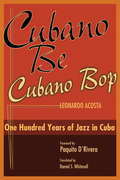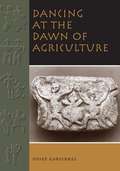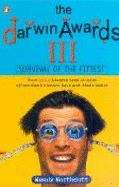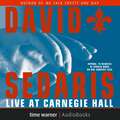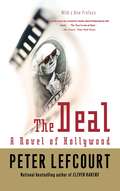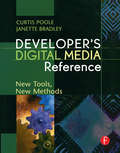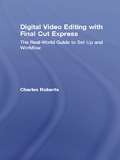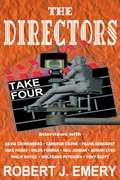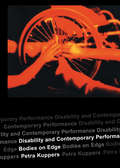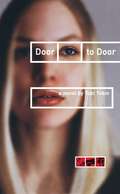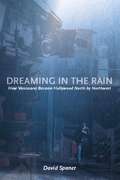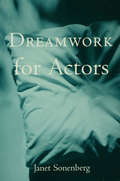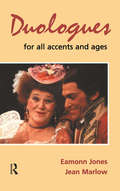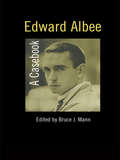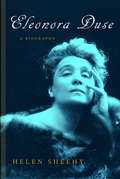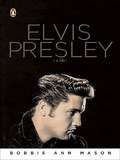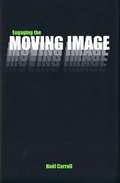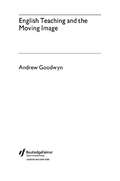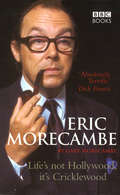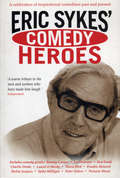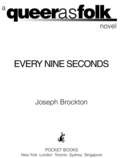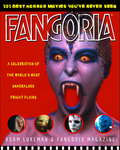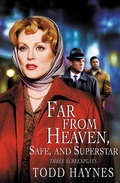- Table View
- List View
Cubano Be, Cubano Bop: One Hundred Years of Jazz in Cuba
by Leonardo Acosta Daniel Whitesell Paquito D'RiveraBased on unprecedented research in Cuba, the direct testimony of scores of Cuban musicians, and the author's unique experience as a prominent jazz musician, Cubano Be, Cubano Bop is destined to take its place among the classics of jazz history. The work pays tribute not only to a distinguished lineage of Cuban jazz musicians and composers, but also to the rich musical exchanges between Cuban and American jazz throughout the twentieth century.The work begins with the first encounters between Cuban music and jazz around the turn of the last century. Acosta writes about the presence of Cuban musicians in New Orleans and the "Spanish tinge" in early jazz from the city, the formation and spread of the first jazz ensembles in Cuba, the big bands of the thirties, and the inception of "Latin jazz." He explores the evolution of Bebop, Feeling, and Mambo in the forties, leading to the explosion of Cubop or Afro-Cuban jazz and the innovations of the legendary musicians and composers Machito, Mario Bauzá, Dizzy Gillespie, and Chano Pozo. The work concludes with a new generation of Cuban jazz artists, including the Grammy award-winning musicians and composers Chucho Valdés and Paquito D'Rivera.
Dancing at the Dawn of Agriculture
by Yosef GarfinkelAs the nomadic hunters and gatherers of the ancient Near East turned to agriculture for their livelihood and settled into villages, religious ceremonies involving dancing became their primary means for bonding individuals into communities and households into villages. So important was dance that scenes of dancing are among the oldest and most persistent themes in Near Eastern prehistoric art, and these depictions of dance accompanied the spread of agriculture into surrounding regions of Europe and Africa. In this pathfinding book, Yosef Garfinkel analyzes depictions of dancing found on archaeological objects from the Near East, southeastern Europe, and Egypt to offer the first comprehensive look at the role of dance in these Neolithic (7000-4000 BC) societies. In the first part of the book, Garfinkel examines the structure of dance, its functional roles in the community (with comparisons to dance in modern pre-state societies), and its cognitive, or symbolic, aspects. This analysis leads him to assert that scenes of dancing depict real community rituals linked to the agricultural cycle and that dance was essential for maintaining these calendrical rituals and passing them on to succeeding generations. In the concluding section of the book, Garfinkel presents and discusses the extensive archaeological data—some 400 depictions of dance—on which his study is based.
The Darwin Awards III
by Wendy NorthcuttThe humour evolution takes another giant step One of the human race's most popular humour series returns with a brand-new collection of hilariously macabre mishaps and misadventures, honouring those who improve our gene pool by inadvertently removing themselves from it. The Darwin Awards III: Survival of the Fittest shows once more how uncommon common sense still is. Celebrate Darwin Award winners who made the 'ultimate sacrifice'; wonder at the misguided pluck of Honorable Mentions who survived their own bad judgment, and look on in awestruck amusement at Personal Accounts shared by the perpetrators themselves. From the sheriff who inadvertently shot himself twice to the insurance defrauder who amputated his leg with a chainsaw, The Darwin Awards III proves again that when it comes to stupidity, we are the most advanced species on the planet.
David Sedaris Live at Carnegie Hall
by David SedarisNo one renders the pathos, chaos and impossible variety of daily encounters like David Sedaris. On every subject, he is bruisingly painful and tenderly affectionate. Recorded live on October 22, 2002, LIVE AT CARNEGIE HALL features excerpts from his forthcoming collection of essays, DRESS YOUR FAMILY IN CORDUROY AND DENIM.Includes:ThanksRepeat After MeWhy Them?Who's the Chef?Buddy Can You Spare a Tie?LessonThree: The Feminine MistakeLesson Four: With a Pal Like This, You Don't Need An EnemySix to Eight Black Men
The Deal
by Peter LefcourtWashed-up Hollywood producer Charlie Berns has mailed in his updated obit and is about to suck his Mercedes tailpipe and fade to black when a miracle materializes: his nephew, a wannabe screenwriter from New Jersey, has scripted the life story of Queen Victoria's prime minister Benjamin Disraeli, which Charlie manages to turn into a hot property that reinstates him as a player. But as the deal heats up, a few conceptual changes morph the project into Lev Disraeli: Freedom Fighter, an action thriller with a black Jewish superstar, a Yugoslavian location, a mad Polish director, and even a real-life kidnapping. Is Charlie Berns being eaten alive by the system? Or is he giving the Hollywood hotshots a run for their money? Peter Lefcourt's hilarious satire proves the old adage that in Hollywood you're never quite as dead as people give you credit for.
Developer's Digital Media Reference: New Tools, New Methods
by Curtis Poole Janette BradleyDesigned for media professionals working across a broad range of formats, Developer's Digital Media Reference is an excellent reference guide for those keeping pace with this dynamic industry. As "convergence" between the World Wide Web, multimedia, and television production communities continues, there is an increased demand for professionals to familiarize themselves with the many new delivery contexts, including hybrid DVD (where digital video content and computer data live on the same disc), interactive TV, and streaming media. Developer's Digital Media Reference covers essential technologies such as SVG (scalable vector graphics), SMIL (Synchronized Multimedia Integration Language, a markup language for creating animations on the web), MPEG-4 (compression standard for streaming audio/video), and Dynamic Web Applications. In addition to serving as a quick-look-up guide, this text is organized to explain today's major media: server-based architectures, disc-based architectures, distribution architectures, and merging/shared architectures. Each topic is discussed in terms of the technological background-evolution, current tools, and production tips and techniques.
Digital Video Editing with Final Cut Express: The Real-World Guide to Set Up and Workflow
by Charles RobertsSuitable for those new to nonlinear editing as well as experienced editors new to Final Cut Express, this book is an introduction to Apple's editing software package and the digital video format in general. You will come away with not only an in-depth knowledge of how to use Final Cut Express, but also a deeper understanding of the craft of editing and the underlying technical processes that will serve you well in future projects. Workflow, editing techniques, compositing, special effects, audio tools, and output are explained in clear, jargon-free terms. The book's emphasis is always on using Final Cut Express in the real world, and as such it is the only book to go beyond the interface to address crucial issues like proper setup, system configuration, hardware, the Mac operating system, what equipment to purchase, and troubleshooting common problems. Armed with this information, you will sidestep problems and complete projects of exceptional quality.
The Directors: Take Three (The\directors Ser.)
by Robert J. EmeryThe Directors, Take Three offers dozens of masterful insights on the craft of directing from such renowned filmmakers as Robert Altman, Wes Craven, Alan Parker, Tim Burton, Steven Spielberg, and Barry Levinson. Here are details of their experiences making a variety of classic films from Nashville to Nightmare on Elm Street, Rain Man to Raging Bull, and Pee Wee's Big Adventure to Schindler's List. You'll discover directors' earliest reactions to scripts for films that became classics; how legendary scenes were staged and shot; behind-the-scenes stories of the unknown actors who landed major roles and went on to become superstars; the underdog films that confounded expectations; directors' unique approaches to their art; and much, much more. This magnificent series also includes each director's filmography, complete listings of major awards, and cast credits for every film discussed. A fabulous source of insights, anecdotes, and industry secrets for film buffs everywhere!
Disability and Contemporary Performance: Bodies on the Edge
by Petra KuppersDisability and Contemporary Performance presents a remarkable challenge to existing assumptions about disability and artistic practice. In particular, it explores where cultural knowledge about disability leaves off, and the lived experience of difference begins. Petra Kuppers, herself an award-winning artist and theorist, investigates the ways in which disabled performers challenge, change and work with current stereotypes through their work. She explores freak show fantasies and 'medical theatre' as well as live art, webwork, theatre, dance, photography and installations, to cast an entirely new light on contemporary identity politics and aesthetics. This is an outstanding exploration of some of the most pressing issues in performance, cultural and disability studies today, written by a leading practitioner and critic.
The Dog Of My Nightmares
by David LieberStories and columns ranging from serious to hilarious written by a popular Texas columnist. Read about the woman of his dreams, the psycho dog of his nightmares, neighbors, thoughts of prejudice, and pride in the strength of our people.
Door to Door
by Tobi TobinIn this edgy, frenetic fictionalized memoir, a small-town girl turned linchpin of the Los Angeles club scene draws on her intoxicating but conflicted years working the door of Hollywood's hottest clubs to pen a striking story of ambition, loss, and love. After growing up in idyllic Bloomfield Hills, Michigan, seventeen-year-old Tobi leaves behind a childhood that was anything but idyllic and chases her dreams of modeling to New York. When the Big Apple turns out to be a bust, Tobi finds her way to L.A. and to the fringes of the film world elite. Hungry for an "in" she gets busy barhopping, party-going, and producer-hunting, eventually falling into a beautiful but complicated relationship with a famous actor. Though her own acting career never takes off, a chance encounter lands her a job working the door of an old friend's club. A whole new world opens up. Raw and revealing, Door to Door is both an unprecedented glimpse into the L.A. club scene and the riveting story of a girl who puts it all on the line for her chance to become somebody.
Dreaming in the Rain
by David SpanerVancouver is now North America's third largest center for film and television production, recently witnessing the filming of Halle Berry's Catwoman and Will Smith's I, Robot, among others. But Vancouver has been hosting filmmakers for years, coming into its own in the early 1970s when Robert Altman, Warren Beatty and Julie Christie made McCabe and Mrs. Miller and Mike Nichols, Jack Nicholson and Candice Bergen filmed Carnal Knowlege.Dreaming in the Rain tells the story of how Vancouver became North by Northwest, from its early days as a Hollywood studio backlot to its becoming home to a vibrant indigenous scene that is among the most acclaimed, provocative, independent filmmaking communities anywhere.But with Hollywood's growing concern over "runaway" productions, Vancouver's growing filmmaking scene is wrought with controversy. The city's American-based film industry is powerful enough to inspire loathing and threats from Hollywood.Along with tracing the art and commerce of Vancouver filmmaking, Vancouver Province movie critic David Spaner brings to life the flamboyant film personalities who left their marks. From visitors like Errol Flynn and Robert Altman, to local heroes such as The Matrix's Carrie Anne Moss, who grew up in Vancouver, and Kissed star Molly Parker and director Lynne Stopkewich, vital players in the groundbreaking Vancouver indie scene.Includes more than 40 black and white photographs.". . . [Spaner] has . . . scrupulous attention to detail and an obvious curiosity and passion for both Vancouver and its film industry."--Entertainment TodayDavid Spaner is a movie critic for the Vancouver Province.
Dreamwork for Actors
by Janet SonenbergDrawing upon her wide experience as actor and director, Janet Sonenberg shows what dreamwork can do. No other acting technique offers the performer's own dreams as a means to profoundly deepen imaginative and artistic expression. This is a wholly new tool with which actors can unleash startling performances.
Duologues for All Accents and Ages
by Jean Marlow Eamonn JonesFirst Published in 2003. Routledge is an imprint of Taylor & Francis, an informa company.
Edward Albee: A Casebook (Casebooks on Modern Dramatists #Vol. 29)
by Bruce MannFrom the "angry young man" who wrote Who's Afraid of Virginia Woolf in 1962, determined to expose the emptiness of American experience to Tiny Alice which reveals his indebtedness to Samuel Beckett and Eugene Ionesco's Theatre of the Absurd, Edward Albee's varied work makes it difficult to label him precisely. Bruce Mann and his contributors approach Albee as an innovator in theatrical form, filling a critical gap in theatrical scholarship.
Eleonora Duse: A Biography
by Helen SheehyA new biography, the first in two decades, of the legendary actress who inspired Anton Chekhov, popularized Henrik Ibsen, and spurred Stanislavski to create a new theory of acting based on her art and to invoke her name at every rehearsal. Writers loved her and wrote plays for her. She befriended Rainer Maria Rilke and inspired the young James Joyce, who kept a portrait of her on his desk. Her greatest love, the poet d'Annunzio, made her the heroine of his novel Il fuoco (The Flame). She radically changed the art of acting: in a duel between the past and the future, she vanquished her rival, Sarah Bernhardt. Chekhov said of her, "I've never seen anything like it. Looking at Duse, I realized why the Russian theatre is such a bore. " Charlie Chaplin called her "the finest thing I have seen on the stage. " Gloria Swanson and Lillian Gish watched her perform with adoring attention, John Barrymore with awe. Shaw said she "touches you straight on the very heart." When asked about her acting, Duse responded that, quite simply, it came from life. Except for one short film, Duse's art has been lost. Despite dozens of books about her, her story is muffled by legend and myth. The sentimental image that prevails is of a misty, tragic heroine victimized by men, by life; an artist of unearthly purity, without ambition. Now Helen Sheehy, author of the much admired biography of Eva Le Gallienne, gives us a different Duse--a woman of strength and resolve, a woman who knew pain but could also inflict it. "Life is hard," she said, "one must wound or be wounded." She wanted to reveal on the stage the truth about women's lives and she wanted her art to endure. Drawing on newly discovered material, including Duse's own memoir, and unpublished letters and notes, Sheehy brings us to an understanding of the great actress's unique ways of working: Duse acting out of her sense of her character's inner life, Duse anticipating the bold aspects of modernism and performing with a sexual freedom that shocked and thrilled audiences. She edited her characters' lines to bare skeletons, asked for the simplest sets and costumes. Where other actresses used hysterics onstage, Duse used stillness. Sheehy writes about the Duse that the actress herself tried to hide--tracing her life from her childhood as a performing member of a family of actors touring their repertory of drama and commedia dell'arte through Italy. We follow her through her twenties and through the next four decades of commissioning and directing plays, running her own company, and illuminating a series of great roles that included Emile Zola's Thérèse Raquin, Marguerite in Dumas's La Dame aux camélias, Nora in Ibsen's A Doll's House, and Hedda in his Hedda Gabler. When she thought her beauty was fading at fifty-one, she gave up the stage, only to return to the theatre in her early sixties; she traveled to America and enchanted audiences across the country. She died as she was born--on tour. Sheehy's illuminating book brings us as close as we have ever been to the woman and the artist.
Elizabeth's Song
by Michael WenbergA fictionalized account of how an eleven-year-old girl, Elizabeth "Libba" Cotten, saved to buy her first guitar and composed the popular folk song "Freight Train."
Elvis Presley
by Bobbie Ann MasonA vibrant, sympathetic portrait of the once and future king of rock ?n? roll by the award-winning author of Shiloh and In Country To this clear-eyed portrait of the first rock ?n? roll superstar, Bobbie Ann Mason brings a novelist?s insight and the empathy of a fellow Southerner who, from the first time she heard his voice on the family radio, knew that Elvis was ?one of us. ? Elvis Presley deftly braids the mythic and human aspects of his story, capturing both the charismatic, boundary-breaking singer who reveled in his celebrity and the soft-spoken, working-class Southern boy who was fatally unprepared for his success. The result is a riveting, tragic book that goes to the heart of the American dream. .
Engaging the Moving Image
by Noël CarrollNoël Carroll, a brilliant and provocative philosopher of film, has gathered in this book eighteen of his most recent essays on cinema and television--what Carroll calls "moving images." The essays discuss topics in philosophy, film theory, and film criticism. Drawing on concepts from cognitive psychology and analytic philosophy, Carroll examines a wide range of fascinating topics. These include film attention, the emotional address of the moving image, film and racism, the nature and epistemology of documentary film, the moral status of television, the concept of film style, the foundations of film evaluation, the film theory of Siegfried Kracauer, the ideology of the professional western, and films by Sergei Eisenstein and Yvonne Rainer. Carroll also assesses the state of contemporary film theory and speculates on its prospects. The book continues many of the themes of Carroll's earlier work Theorizing the Moving Image and develops them in new directions. A general introduction by George Wilson situates Carroll's essays in relation to his view of moving-image studies.
English Teaching and the Moving Image
by Andrew GoodwynAndrew Goodwyn's straightforward approach to teaching about the moving image de-mystifies this topic and shows how it can be easily incorporated into classroom practice. The first of its kind, this book builds on teachers' knowledge of teaching about advertising, newspapers and visual adaptations of literary texts, and provides practical advice and guidance on: * Adaptations: not just the film of the book* Teaching film* Teaching television* Practical work* New technologies and the moving audience. This jargon-free book will be a stimulating and useful guide to teachers and student teachers looking to improve their knowledge of the moving image and its recent arrival in secondary school teaching.
Eric Morecambe: Life's Not Hollywood It's Cricklewood
by Gary MorecambeIn this fascinating autobiography Erics son, Gary Morecambe, describes what it’s like to grow up in the presence of one of the best-loved and most fondly remembered of all British comedy greats. Eric and Ernie brought sunshine and laughter to the people of Britain for an amazing 22 years. Includes photos from the Morecambe family archive and unseen extracts from his father’s personal diaries. Frank and outspoken, this book provides a compelling insight into the man behind the laughter, a man who was constantly worried that one day he would be found out, who never lost his love of Long John Silver impressions, and who continued to work until heart disease finally killed him at only 58 years of age.
Eric Sykes' Comedy Heroes
by Eric SykesEric Sykes is one of Britain's creative comedy geniuses combining personal warmth, superbly observed written and performed comedy and a deeply intimate understanding of what a viewing audience wants. Here he has assembled a comedy hall of fame for those who have inspired, entertained and, most of all, amused him.Including tributes to comedy greats Tommy Cooper, Les Dawson, Ken Dodd, Spike Milligan, Peter Sellers and many, many more, this is a beautiful and personal testimony to the wonderful characters who have stimulated Eric's life-long love affair with laughter.
Every Nine Seconds (Queer as Folk)
by Joseph BrocktonFlashback to 1989 with your favorite characters from Queer as Folk in this new line of books based on the record-breaking Showtime series hailed as "wonderful" (Newsweek) and "groundbreaking" (People)! Before they were grown men working and playing in Pittsburgh, Brian Kinney and Michael Novotny were high-school friends dealing with bullies, secret crushes, and their emerging sexuality. Step back in time with two of Queer as Folk's hottest characters in the first book in this provocative new series. Every Nine Seconds On the eve of Brian Kinney's eighteenth birthday, he and his best friend, Michael Novotny, celebrate a bond that could link them forever if their future paths don't separate them for good. In a few short weeks Brian, the seductive soccer star, will leave for college, where he'll be free to explore the adult pursuits in which he's only dabbled in high school. Michael is destined for a more sedate life in community college while living at home with his eccentric mom. But before their lives diverge, a hot new club will open, they'll go to the prom "stag" together, and family strife will turn their world upside down. Brian and Michael still have some unforgettable times to share before graduation ushers in the next stages of their lives.
Fangoria's 101 Best Horror Movies You've Never Seen
by Adam LukemanA FEAST OF FRIGHTFUL FLICKS WAITING TO BE REDISCOVEREDAs the leading name in the world of horror, Fangoria magazine has been the source of information for fans of fright flicks for more than twenty years--covering feature films, video games, comic books, collectibles, and all aspects of horror entertainment. Working closely with Fangoria's experts, including Editor in Chief Anthony Timpone, Adam Lukeman has compiled a must-have guide for casual horror fans and hardcore horror junkies with Fangoria's 101 Best Horror Films You've Never Seen. With a brief synopsis for each of the included films, lists of cast and crew, "Terror Trivia," and little-known facts about these lesser-known but must-see gems, Fangoria's 101 Best Horror Films You've Never Seen offers a feast of gruesome information. Featured here are flicks that were dumped by their distributors or were initially flops, like Cherry Falls, Manhunter, and Pumpkinhead, foreign winners such as Cronos, The Vanishing, and Funny Games, and straight-to-video sleepers waiting to be discovered, including Shadowbuilder, Jack Be Nimble, and Nomads. There are even surprise entries directed by industry giants--movies like George A. Romero's Day of the Dead, Brian De Palma's Sisters, or Dario Argento's Opera--that are frequently overshadowed by the filmmakers' other, better-known works but are worthy of further examination. Entertaining and informative, Fangoria's 101 Best Horror Movies You've Never Seen offers more than a hundred reasons to look beyond the often ho-hum Hollywood hype fests . . . when you're really in the mood to feel your flesh crawl.From the Trade Paperback edition.
Far From Heaven, Safe, and Superstar: Three Screenplays
by Todd HaynesThree acclaimed screenplays from one of today’s most provocative filmmakers, including the Oscar nominated screenplay Far from Heaven. An award-winning auteur and a pioneer of the New Queer Cinema movement, Todd Haynes has achieved both critical acclaim and box office success with his original, intelligent, and often controversial films. Collected here are three of his most celebrated screenplays. Far from Heaven: Winning fifty critics’ prizes and appearing on two hundred Top Ten lists, Far from Heaven was also nominated for four Academy Awards. Inspired by the films of Douglas Sirk, it tells the story of a 1950s housewife who is alienated by her neighbors when she pursues an affair with her African American gardener after learning of her husband’s homosexuality. Safe: Haynes’s breakthrough feature was voted Best Film of the 1990s by the Village Voice Film Critics Poll. It tells the disturbing story of an affluent suburban housewife whose life is shattered by a mysterious illness. One character suggests that perhaps she is “allergic to the twentieth century.” Superstar: The Karen Carpenter Story: Told with a cast of Barbie dolls, this short film about Karen Carpenter’s battle with anorexia was named one of Entertainment Weekly’s Top 50 Cult Movies in 2003. Though the film was ordered destroyed after a lawsuit by the Carpenter estate, it remains an underground classic and “the most talked-about, least-seen film of the ’80s” (The A.V. Club).
